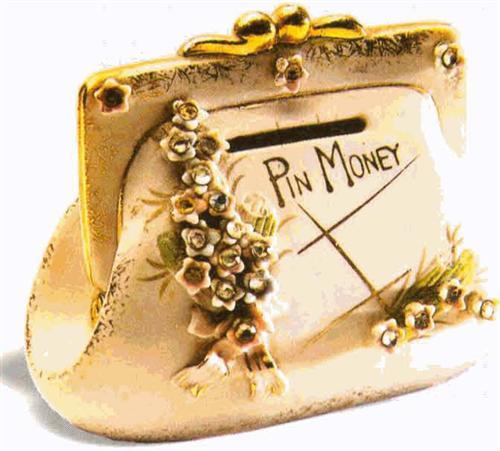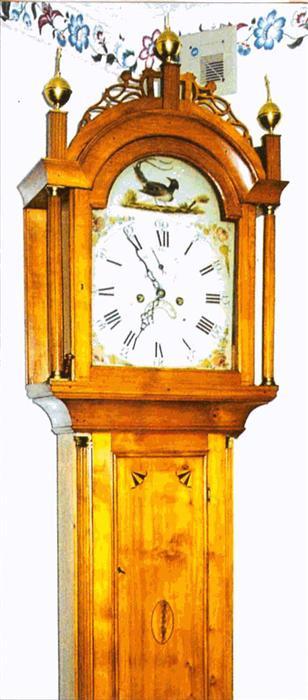Sign up for the Family Tree Newsletter Plus, you’ll receive our 10 Essential Genealogy Research Forms PDF as a special thank you!
Get Your Free Genealogy Forms
"*" indicates required fields
SHARING 101
Last Mother’s Day, my sister handed me a small, bubble-wrapped package. I opened it with knowing anticipation; it was my turn.
When my mother passed away three years ago, Barb and I spent a weekend dividing up mom’s possessions. No kids. No good-intentioned spouses, just us. The fate of many of the larger items had already been decided over the phone. We were down to all of the stuff that had enough value — collectible or emotional — to escape the impending garage sale.
A large collection of Hummel figurines stood on the coffee table, arranged in loosely themed categories. First “picks” were easy due to several duplicates — this group having already been merged with my grandmother’s collection 20 years back. That was easy. Then we took turns choosing in each category based on the personalities of our kids. She has two sons; I have two daughters. Her boys like to fish and play the piano; my girls adore animals and love to read. Mom would have been proud of our sibling democracy.
That completed, we worked on through the rest of the items until we were left with just one. It was a small, ceramic bank designed to look like a metal-clasped change purse — decorated with flowers and rhinestones and gold lettering declaring “pin money.”
As a kid, I remember its exact place on my mom’s doily-covered dresser. On occasion, I would “borrow” a quarter from it. Now, I wanted to keep it on my dresser. Obviously, my sister shared similar memories. Our civilized dividing-of-the-goods abruptly ended. We had reached a stand-off.
Then we devised a novel solution. What if we shared custody of this precious keepsake? It works in divorce, and we were still speaking to each other. So now, we each get to have the bank for a year before carefully wrapping it in sealed air and sending it on to its “other” home. The designated hand-off day? Mother’s Day, of course.
NANCY STETLER Mason, Ohio
Grandparents Anonymous
While doing family research I was able to go only as far as my grandfather’s parents’ names, dates of birth, dates of death, etc. When I got as much information as I could on them, I wanted to get the names of their parents, and I decided if anybody knew it would be my grandfather. So I called him and asked if he knew what his grandparents’ names were. Now mind you this is a man who doesn’t talk about the past; the older generation is very tight-lipped about everything.
When I asked him what his grandparents’ names were, he said, “Mom and Dad.” Thinking he was just being a donkey’s back-end, I begged him to give me a break and to tell me what their names were, but he said he honestly did not know — that his parents called them Mom and Dad and that you just didn’t know about your parents or your grandparents back in those days, you didn’t know when a birthday was, sometimes a child didn’t even know that someone had died. Things were not talked about around children.
My grandfather was very serious about not knowing, but I was really about to roll on the floor laughing.
BARB NORWOOD St. Louis
Keeping Time
Family heirlooms are passed lovingly from generation to generation not only because they’re valuable, but because they connect us with our ancestors. They keep stories alive and remind us how we came to be who and where we are. Such is the case with the grandfather clock, shown here, that’s been in the Svenson family of Westford, Mass., since the 18th century. It was originally part of Rebecca Pope’s dowry when she married Jonathan Proctor in 1784.
“Helen Proctor Mason, my husband Richard’s grandmother who is now deceased, wrote that Rebecca had been born in Danvers, Mass., and belonged to a well-settled family in that town,” says Mary Svenson. “Her family used to drive the young and neat [female] cattle up through Dunstable in the summer to pasture them in Ringe, N.H. To do this, several farmers would join together, bringing their horses and perhaps carriages and staying overnight along the way. The Proctor house in Dunstable was a stopover for the passing cattle drive going both ways, summer and fall. As a result of the cattle program, Rebecca became acquainted with Jonathan Proctor.”
This story has been told to Rebecca and Jonathan’s children, grandchildren, and several-greats-grandchildren. Mary Day, a cousin to Richard’s great-grandfather William P. Proctor, memorialized the clock in a poem she wrote a century ago:
To a Grandfather’s Clock
I am old and worn, as my face appears, For I’ve run on time for one hundred years. Many have fallen since I begun, Many will fall e’er my race I’ve run. I’ve buried the world with its hopes and fears In my long run of one hundred years.
From the January 2000 issue of Family Tree Magazine.
ADVERTISEMENT



